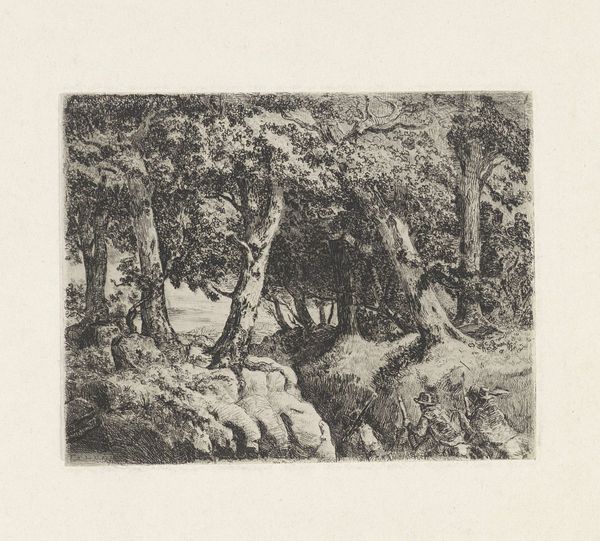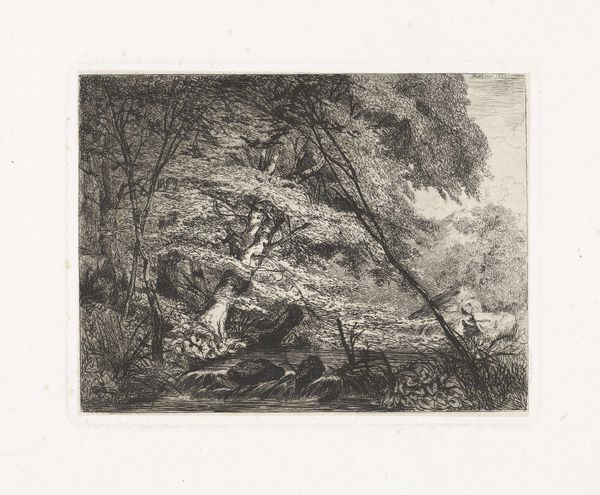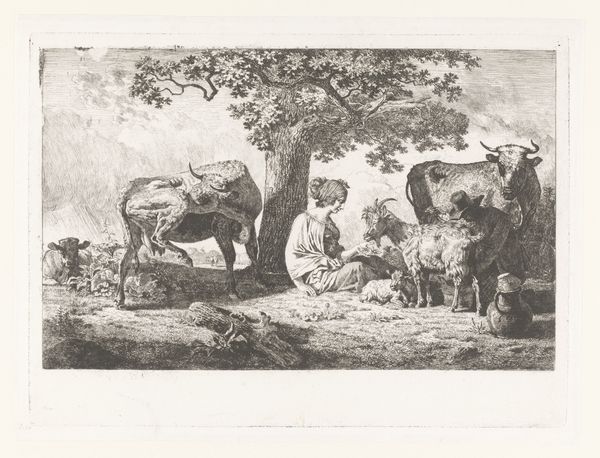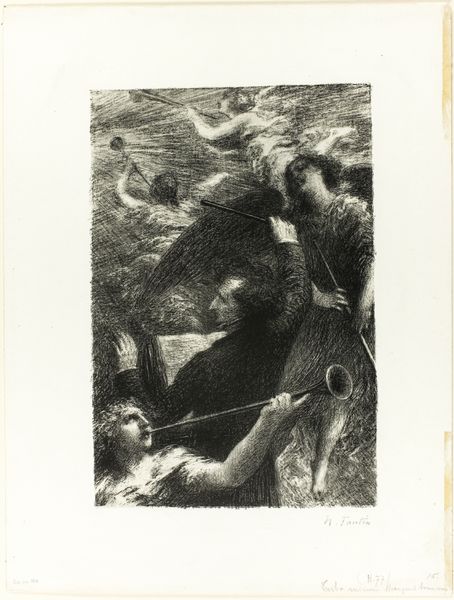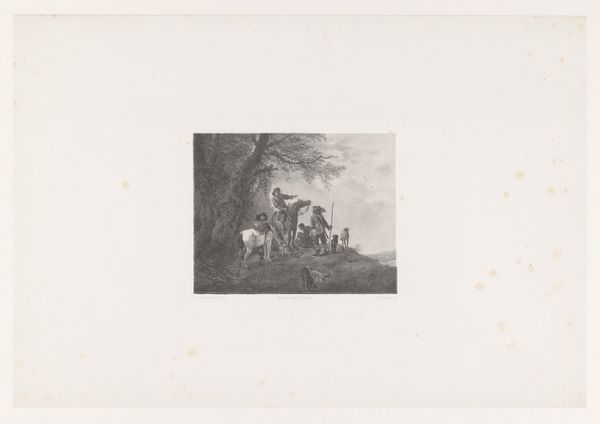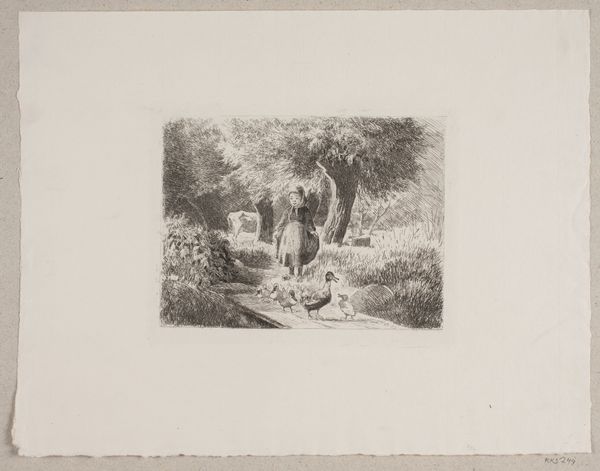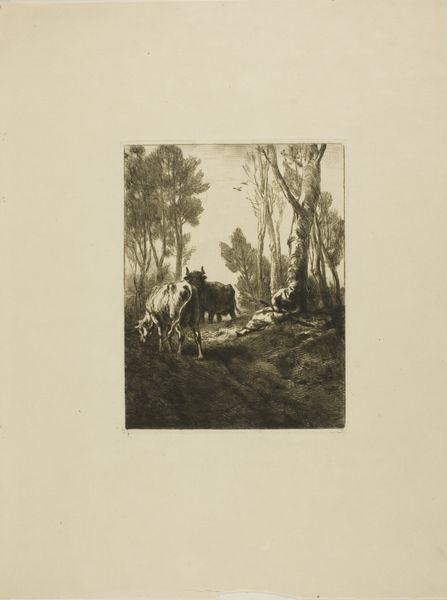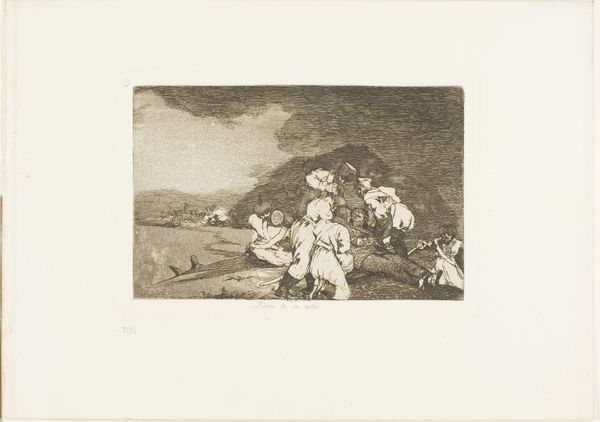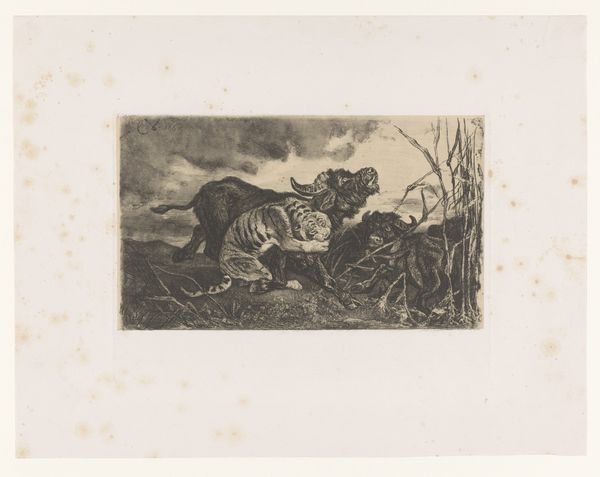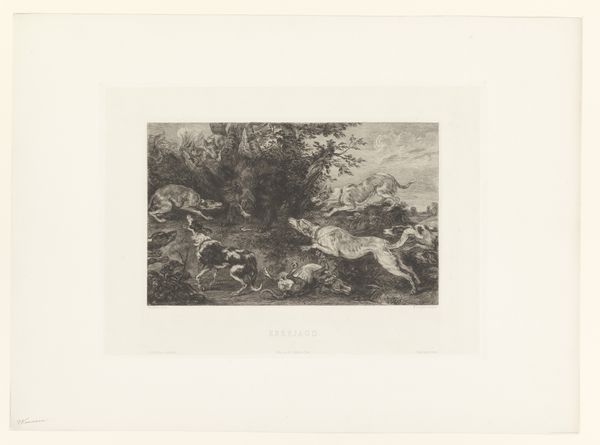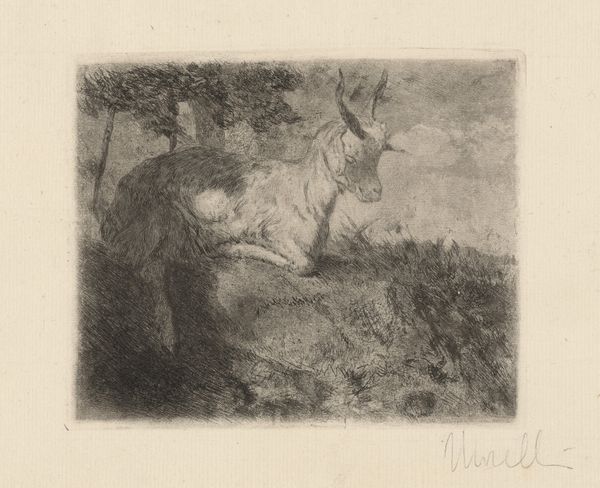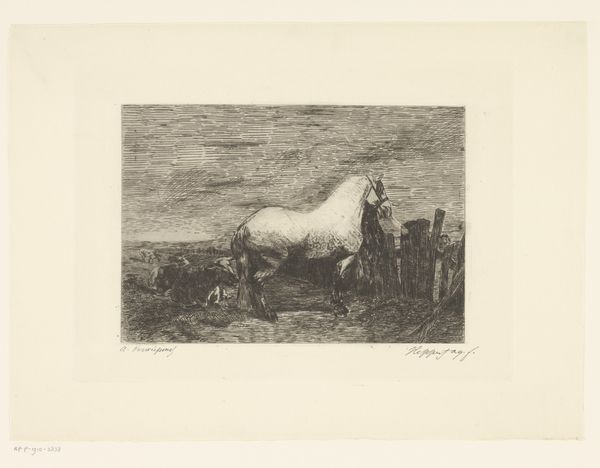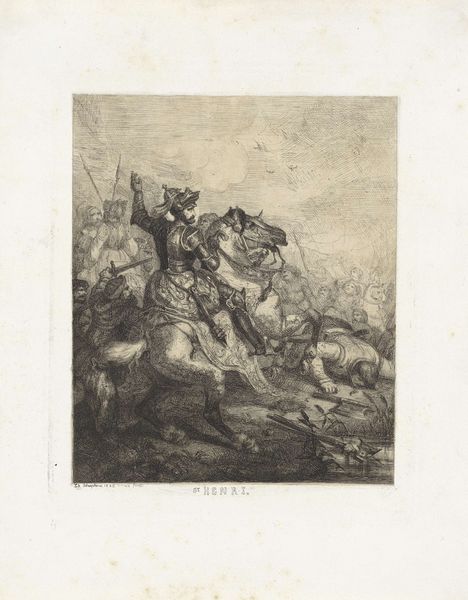
drawing, pencil, graphite
#
pencil drawn
#
drawing
#
negative space
#
pencil sketch
#
landscape
#
figuration
#
pencil drawing
#
pencil
#
graphite
#
genre-painting
#
graphite
#
realism
Dimensions: height 260 mm, width 345 mm
Copyright: Rijks Museum: Open Domain
Editor: This graphite drawing, "Liggende herderin omgeven door schapen," which translates to Reclining Shepherdess Surrounded by Sheep, by Anthony Cornelis Cramer, dates to between 1867 and 1874. I'm struck by the shepherdess’s weary pose juxtaposed with the rather alert-looking sheep. What story do you think Cramer is trying to tell here? Curator: The drawing evokes a moment of rural tranquility, yet it's impossible to ignore the social realities it hints at. These genre scenes gained popularity partially because of rapid urbanization and industrialization, when nostalgia for the countryside served to reinforce idealized versions of pastoral life, almost erasing the hardship. How do you feel knowing that museums served to present this work to the public? Editor: I see what you mean. It does feel like this image might have been a sort of escape for city dwellers, masking the difficulties faced by rural workers. So the drawing and how it was displayed almost participated in a narrative about Dutch identity? Curator: Exactly. Think about the art market, the collectors, and the critics of the time – they all contributed to shaping the perception of such works. Genre paintings depicting humble workers allowed viewers to feel connected to a simpler, perhaps romanticized, past. But who gets to define that past, and for what purpose? Editor: That gives me a new perspective on seemingly simple landscape drawings. So, instead of just appreciating the skill of the artist, we can also consider the broader social and political context in which it was created and received. Curator: Precisely! It reminds us that art never exists in a vacuum.
Comments
No comments
Be the first to comment and join the conversation on the ultimate creative platform.
